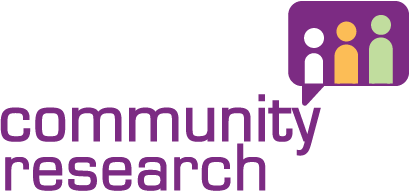Engaging with Deaf people: Top tips
Deaf people have significantly different needs of support and service providers than hearing people, yet their needs are often poorly understood and rarely met. Poorly designed services risk being inaccessible to Deaf people, leaving them vulnerable to poorer health, debt and financial difficulties, and cut off from social, leisure and work opportunities. Organisations who make an effort to hear from Deaf people can avoid this, so here are our top considerations for engaging with Deaf people.
Things you probably don’t know about Deaf people
Profoundly and congenitally Deaf people are very different to people with acquired hearing loss. ‘Deaf’ (with a capital ‘D’) people often have their own proud culture, language and strong social networks. People who have become ‘deaf’ (small ‘d’) in life often regret and try to hide their hearing loss, and are prone to social isolation as communication with family and friends becomes difficult.
For many Deaf people, British Sign Language (BSL) – not English – is their first language. Many do not read or write well in ‘long’ English. Some Deaf people are described as having ‘acquired learning difficulties’, as education is rarely adapted to suit their communication needs, so they may have missed out on chunks of learning.
Not all deaf people use BSL, some use SSE (sign-supported English), lipreading, and speech. Some deaf people are ‘oral’ (they use their voice), others are not.
Deaf people are often very direct: BSL has few euphemisms (unlike English), so prepare for them to tell you straight without pussyfooting around issues! In addition, abstract concepts don’t always translate well into BSL.
Identifying and recruiting Deaf people for research
We advocate going through Deaf community groups, charities or associations to promote and recruit for research. These groups often have strong social networks they can tap into, and are frequently delighted to give Deaf people the chance to have their say and express their needs. They can also offer great advice on running sessions with groups of Deaf people and can help with booking BSL interpreters and other communication support. We offer incentives to thank organisations who help us recruit, as well as to participants themselves.
We advise holding research sessions in venues that people are familiar with and used to gathering at (for example, their local Deaf centre or community hall). That way, they will be within their comfort zone.
Getting communication support right
It is important to find out in advance who you will be meeting and what their communication needs are. It is good practice to book two BSL interpreters, as simultaneous interpretation is exhausting and they will need to take turns. Other communications support you may need to consider includes a room loop or personal hearing loops and a lip-speaker or speech-to-text reporter, depending on the needs of individual participants.
You also need to think carefully about how you present written materials (given varying levels of English literacy). Visual materials often work better and you’ll need to consider how you set up the room so everyone can see well to lip-read and communicate.
Recording conversations
It is standard practice to audio-record sessions in research. However, for conversations in BSL, audio-recording is a secondary source of information (i.e. it has been through an interpreter). Best practice is to video-record (pending participants’ consent) so you have an accurate record of people’s views.
And finally… prepare for the unexpected!
Some Deaf people lack confidence in unfamiliar situations and social interactions. They may need encouragement to take part, and some people may turn up late, or with people you weren’t expecting. On the plus side, prepare to laugh and to come away with a new and fresh perspective on life. Deaf communities have a great sense of humour, and you’re bound to learn a huge amount from taking a peak into the lives of Deaf people.
Here’s a comment from one of our clients on a recent project we completed with this audience:
“Understanding more about the specific and different needs of Deaf and deaf people was a priority for us in developing our strategies to ensure we are providing all the services our customers expect. Learning that English is often not the first language for Deaf people was a real ‘oh!’ moment for us, and is playing a key role in helping us shape our ways of communicating with this group.” Carolyn Cooksey, Anglian Water

